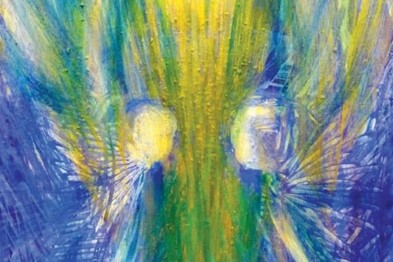It is in the respectful and explored space between us where the greatest light is revealed. View the study sheet here. Watch the recording here.

Even before we as a species could write, we built monuments to what we understood to be the source of enduring power. The design of these structures has varied, but their purpose has remained essentially unchanged: to honor that source and to serve as a bridge between it and us.
The earliest such buildings were the ziggurats of Mesopotamia, dating back about 4,500 years ago. These were not places for public worship or ceremonies. They were dwelling places for gods. Their layered design also imagined the possibility of human ascent to the heavens, as described in the Mesopotamian Epic of Gilgamesh: “Who can climb to the heavens and become immortal? Only a member of the Divine Assembly lives forever.”
The pyramids and enormous statutes of ancient Egypt celebrated not only the divinities that controlled all of life and death but also the power of those humans who ruled on earth. Percy Bysshe Shelley’s poem “Ozymandias,” inspired by the recent discovery of the shattered statute of Ramses II, mocked the pharaonic arrogance of everlasting, omnipotent power: “My name is Ozymandias, King of Kings/Look on my Works, ye Mighty, and despair!”/Nothing beside remains. Round the decay/Of that colossal Wreck, boundless and bare/The lone and level sands stretch far away.
The Jewish Bible imagined a different point of connection between the Source of all life and us. The ziggurat Tower of Babel is levelled by God early in the book of Genesis. Pharaoh and the power of Egypt are humbled into almost oblivion in the book of Exodus.
The Israelites, the slave laborers who had built the pyramids, celebrate their liberation by freely embracing a new construction project: the Mishkan. This sacred dwelling is very different from the Mesopotamian towers or the monumental burial chambers of Egypt. It is horizontally, not vertically, layered. And it is designed to be moved as the people move, not static and subject to the erosion of time.
Within the Mishkan the site which evokes the presence of God most intensely is not an altar of sacrifice or an image of the divine. It is the space between two figures, the cherubim, who are facing one another: “Make two cherubim, their faces shall be each to the other. I will meet with you there, between the two cherubim.”
Two beings with their faces turned to one another. That this is where God meets with us should come as no surprise. Torah has been teaching us from its opening how important is the face-to-face relationship. God creates for Adam a helper who will face him. Disaster falls when Cain drops his face in the presence of his brother Abel. Jacob exults in his reconciliation with his brother Esau by exclaiming, “to see your face is like seeing the face of God!”
The philosopher Emmanuel Levinas describes the encounter of another’s face as giving birth to us as ethical beings. It interrupts our self-focus which leads to anxiety, fear and covetousness. Just as the Israelites experienced at Mount Sinai, we tremble into awareness of and grateful responsibility for an other. In such encounters, writes Levinas, there is a third presence: a trace of the Infinite, that which defies being totally known, defined, or controlled. We recognize that quality in the other person before us as well. And that is the beginning of finding meaning in this world.
Yoram Raanan is an Israeli artist. He was born in New Jersey and graduated from University of the Arts in Philadelphia in 1975. In 1977 he moved to Israel, eventually settling on a farm in the Judean Hills, where he built his art studio. Raanan paints with colors as sources of iridescence. His canvasses are sites for merging the physical and the spiritual.
Presented here is his painting The Cherubim. About it Raanan writes, “This work came into being after a lot of searching and scraping through many layers of thick paint. All the cutting away and carving created a sense of motion in the wings and introduced a new kind of light to the work. Wings are coverings that both cover and conceal, but it is in the space between them where the greatest light is revealed.”
To face another as one to be responsible for rather than as one to be used is not easy. It requires commitment, vulnerability, and exploration. A “searching and scraping through many layers of thick paint.” But it is in that respectful and explored space between us “where the greatest light is revealed.”
Join us here at 7:00 p.m. (PT) Thursday February 23 as we explore where the greatest light is revealed.








